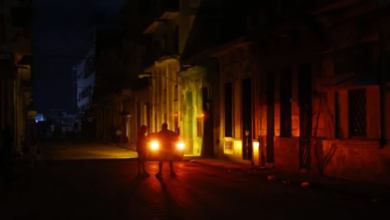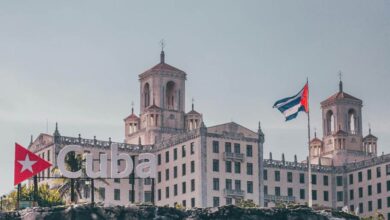How Did Latin America Go From the COVID-19 Crisis to Being the Most Vaccinated Region in the World?
In LatinAmerican Post we detail what are the keys to the high rate of immunization against COVID-19 in Latin America.

Almost two years after the start of the pandemic, Latin America today is the area of the world that leads the race for vaccination across the planet. Photo: Rawpixel
LatinAmerican Post | Christopher Ramírez
Listen to this article
Leer en español: ¿Cómo pasó Latinoamérica de la crisis por COVID-19 a ser la región más vacunada del mundo?
At the beginning of the COVID-19 pandemic, the great powers such as China and the United States gradually became the epicenter of this global problem, to then move to Europe and finally reach Latin America. During several months of 2020 and 2021, this was positioned as the region with the most cases of contagion per number of inhabitants in the world.
By June 2020, according to data provided by Johns Hopkins University, at least four of the fifteen countries with the highest number of infections were Latin American: Brazil, Peru, Chile, and Mexico.
In detail, the European Center for Disease Prevention and Control (ECDC, for its acronym in English), showed that while countries such as Italy, the United Kingdom, and France never exceeded the margin of a thousand deaths per day between February and June of 2020 (one of the most critical times of the pandemic), in South America, Brazil managed to break that limit after an incredible increase between April and June of that year; By then, Europe was already beginning its economic reactivation, while Latin America was just beginning to experience the first fatal peak left by this health crisis in the region.
Now, almost two years after that moment, Latin America, considered by many to be one of the regions that faced the pandemic worst at the beginning and middle of it, today is the area of the world that leads the race for vaccination in all the planet. According to a report carried out within the framework of the Our World in Data project, as of December 28, South America is the region with the best vaccination rate in the world: at least 63.3% of its population has been immunized against COVID-19.
In the second place, there is the entire European continent with a vaccination rate of 60.7%, while Africa is placed in the last position, having vaccinated only 8.8% of its inhabitants.
How was this vaccination rate achieved?
Although it seems to be one of the 'Cinderellas' of the world, Latin America is winning the pulse of other large territories, which have a greater financial muscle and better health services. How was this level reached?
For some experts, trust has been the key, achieved by the antecedents left by other important vaccination campaigns in the region, such as those against diseases such as polio, measles, and smallpox.
History has allowed people to trust their governments in terms of vaccination. The successful immunization campaigns were also a resource for States not to start the inoculation process from scratch, but to have a clear idea of what it was to massively vaccinate their population and how to do it.
Thus, for example, Cuba, considered one of the countries with the best medical system in the world, not only for its incredible performance in training personnel but also for the production of its own medicine, reached a few days after the end of 2021 a complete vaccination rate of 84.1% of its inhabitants. This, according to the Pan American Health Organization (PAHO) not only places it as one of the countries with the best immunization level in Latin America but also on the entire planet.
On the other hand, Latin America has what many have called “luck” of being one of the regions that have received the most donations. As of December 17, 2021, the United States had already donated a total of 51.8 million doses, which represents slightly more than the total population of Colombia. According to Statista, a portal specialized in data collection, on November 3, Mexico was the territory that benefited the most from these donations from its northern neighbor, with a total of 25% of the vaccines destined for this country.
However, according to the reports presented jointly by the Society of the Americas and the Council of the Americas (AS / COA), organizations dedicated to the educational, political, social, and business debate in the region, the United States He is not the only one that has donated vaccines against COVID-19 to Latin America.
Also read: What Will the COVID-19 Pandemic Look Like in 2022?
The governments of China and Russia have been quite committed to this project, the first donating more than 2 million doses, from Sinovac and Sinopharm to countries such as El Salvador, Bolivia, and Venezuela, while the second delivered an undetermined number of his Sputnik vaccine to Nicaragua. Canada and Spain have also collaborated on this strategy.
Likewise, there is COVAX, the multilateral treatment commanded by the World Health Organization (WHO) that, according to AS / COA, has already served to supply the region with more than 69 million doses. The mechanism aimed to distribute a total of 280 million before the end of 2021.
Last but not least, it should also be noted that Latin America, in a historical event, has also decided to create its own vaccines. The Cuban Ministry of Public Health assured that of the 11, 33 million inhabitants that this country has, as of December 15, 2021, they had already been vaccinated, with at least one dose of Soberana-02, Soberana Plus and Abdala (all vaccines Cuban), a total of 10,235,340, of these, 9,275,241 had the complete vaccination scheme (with these same biologics).
Likewise, other countries such as Argentina and Mexico collaborated in the creation of an AstraZeneca vaccine that is expected to be distributed in 2022, while in Brazil the biopharmaceutical company Eurofarma hopes to replicate more than 100 million doses of Pfizer's vaccine in the region. / BioNTech, starting production this year.
In this way, Latin America is expected to be one of the best-prepared regions for what will be the upturn in omicron cases, considered the most contagious variant of COVID-19 to date.




